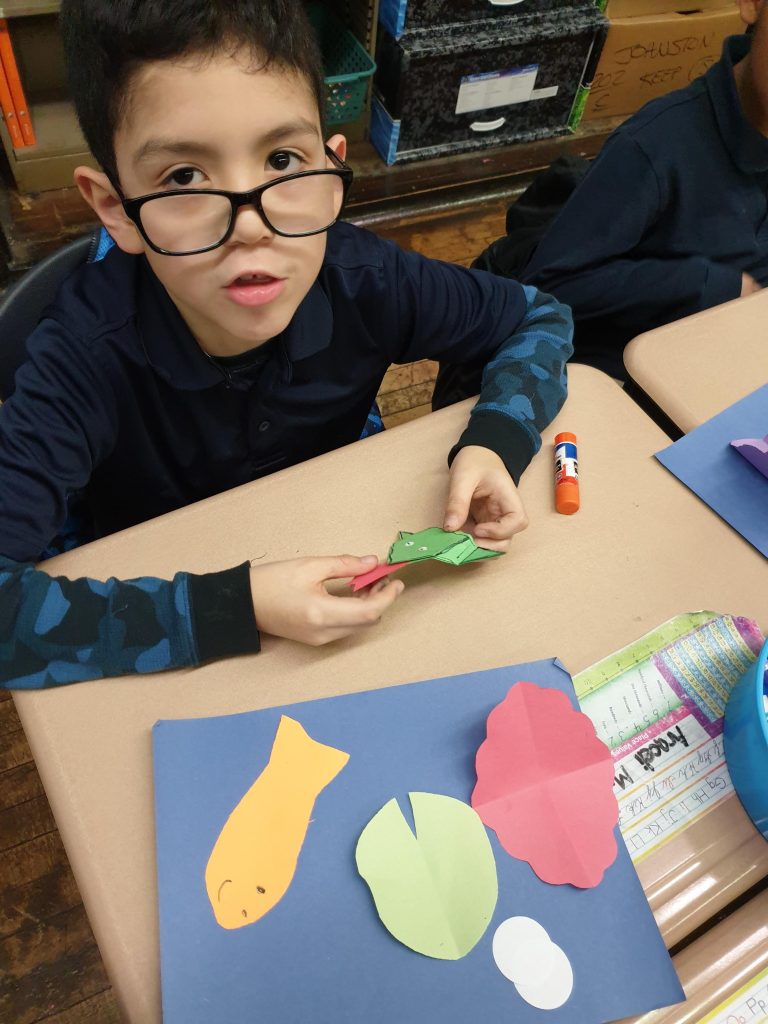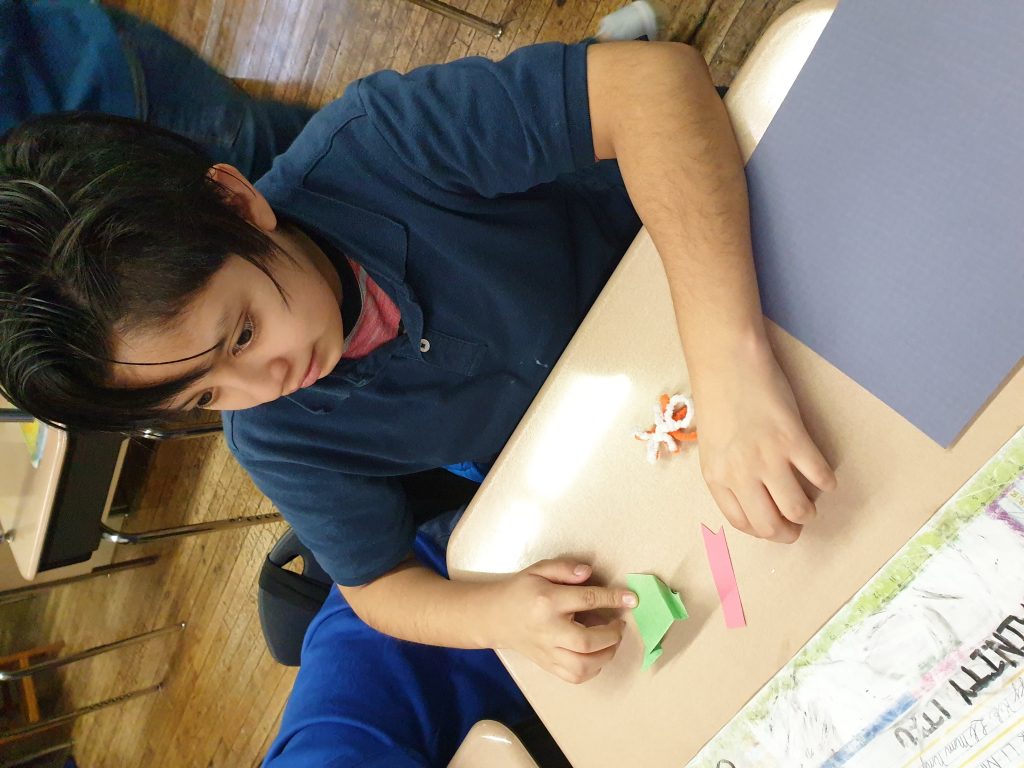Every four years we add an extra day to February known as Leap Day. This day is added to make sure that the calendar stays in line with the Earth’s rotation. The associated “mascot” of Leap Year is the frog, whose hopping is easily recognizable. Our plan this week was to teach our students about the history and purpose of Leap Year, as well as teach them a little about the frog.
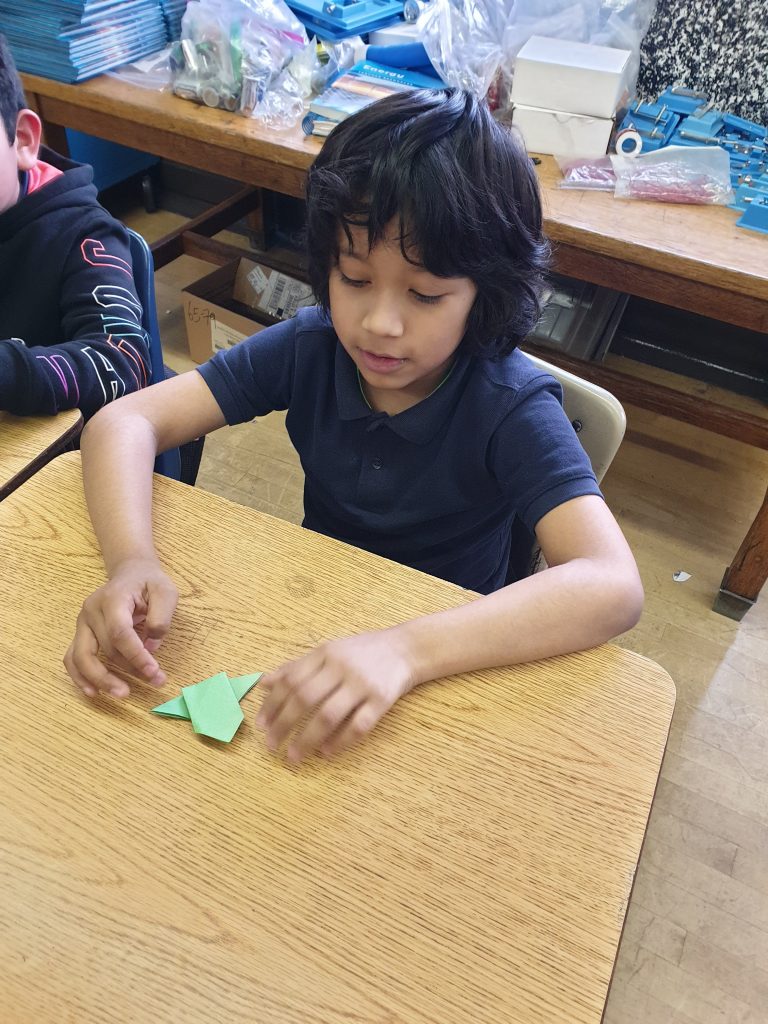
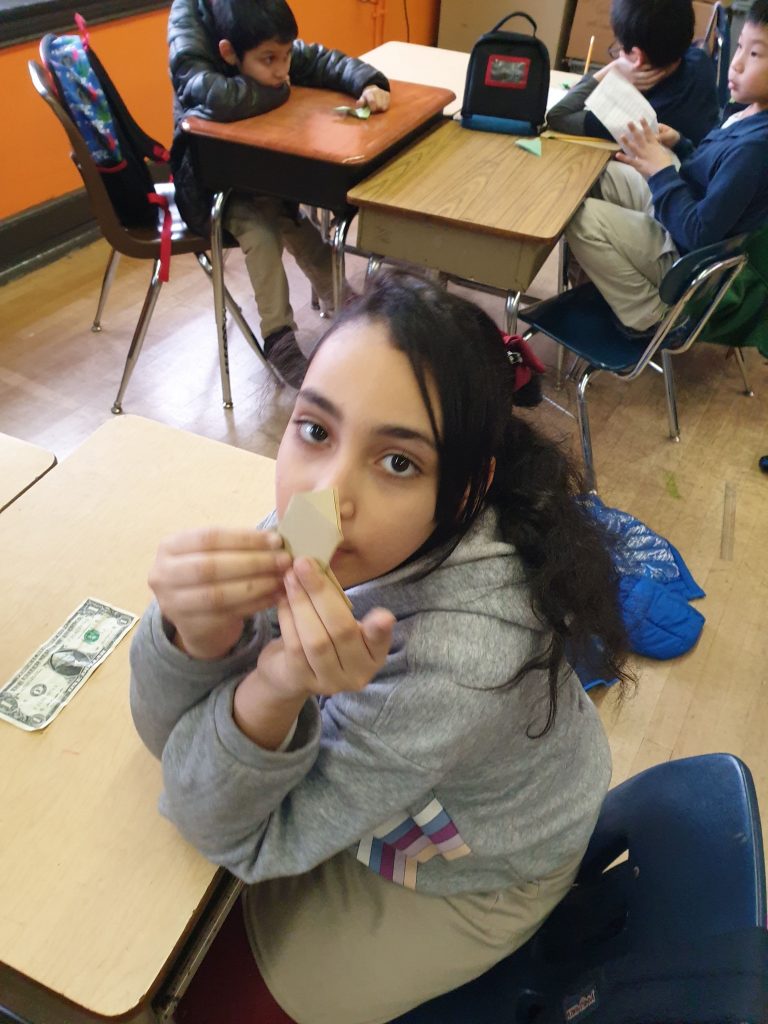

To start off the class, we had the students practice a mindfulness activity called “sitting like a frog.” We asked them to close their eyes and sit very still like a frog on a lily pad. We did this for one minute with no talking, and asked them to simply use their imagination to pretend they were a frog waiting to catch dinner. At the end of the minute they could imagine a bug flying by and catching it because they were so still. This was a quick activity that allowed the class to settle down and focus their attention on something for one full minute. This noticeably helped them listen to the next instructions better and be able to concentrate on the activity.
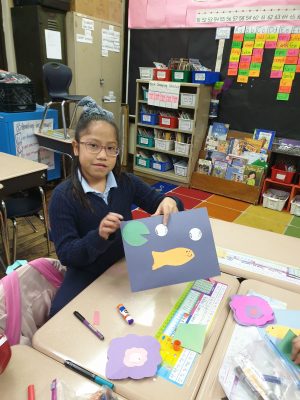
Next we taught the class how to make easy origami frogs. We handed out small green squares and led them step-by-step through the folding. After this, we went through the habitat of a frog, what they eat, and what other animals live around them. Based on their answers, we had them build a habitat for their frog step-by-step.
Step 1: Fold the square diagonally to create a triangle and crease the fold
Step 2: Take one corner and fold it in, following the bottom line of the triangle. The crease should be halfway between the corner you’re holding and the middle of the triangle. Next with the same corner, you fold it back out halfway between the crease you just made and the middle of the triangle. This should make the corner of the triangle stick out from the side and make one leg of the frog. Repeat for the other side
Step 3: Flip the frog over and now you have a simple origami frog. You can lightly press the back down to make it hop. We handed out cutout circles for eyes and cutout red tongues that they could glue onto their frog.
Step 4: Next, we gave them all the supplies to make a habitat. They learned that frogs live near ponds, lakes, marshes, etc. so we gave them blue construction paper. We also handed out cut out lily pads, flowers, fish, and bubbles to finish off their frogs habitat. They were able to create their own unique places for their frog to live using these supplies, as well as drawing on their own details.
Step 5: They learned that a group of frogs was called an army. We gave them more paper squares to fold some more frogs, so that they each were able to go home with an army of frogs.


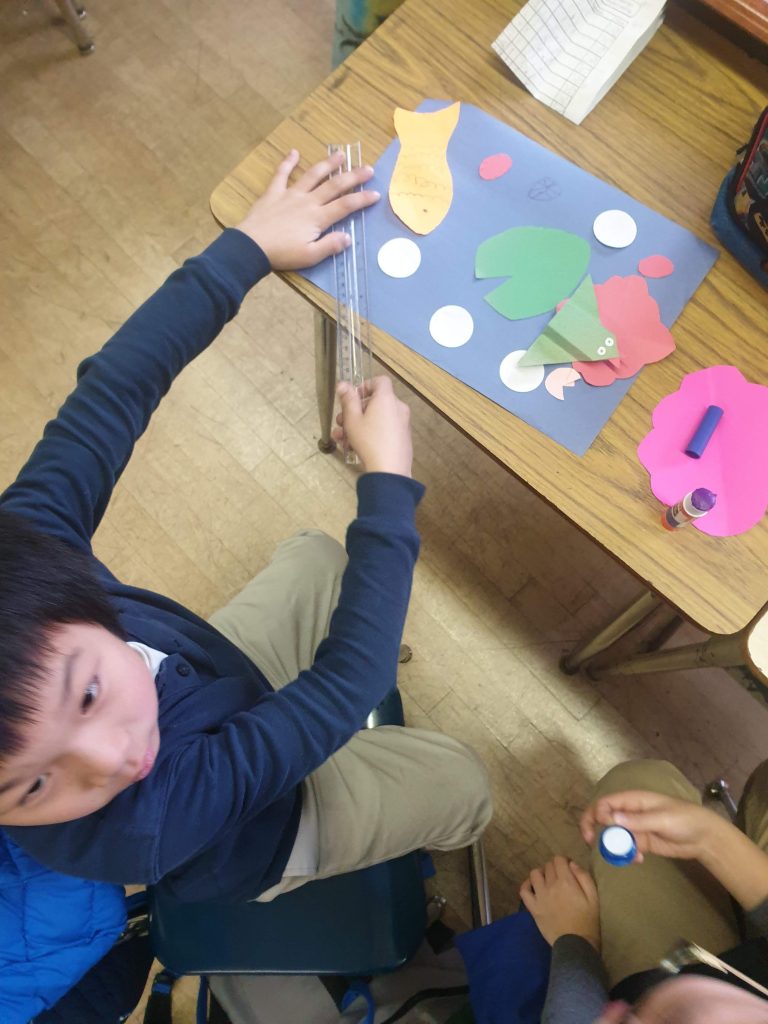
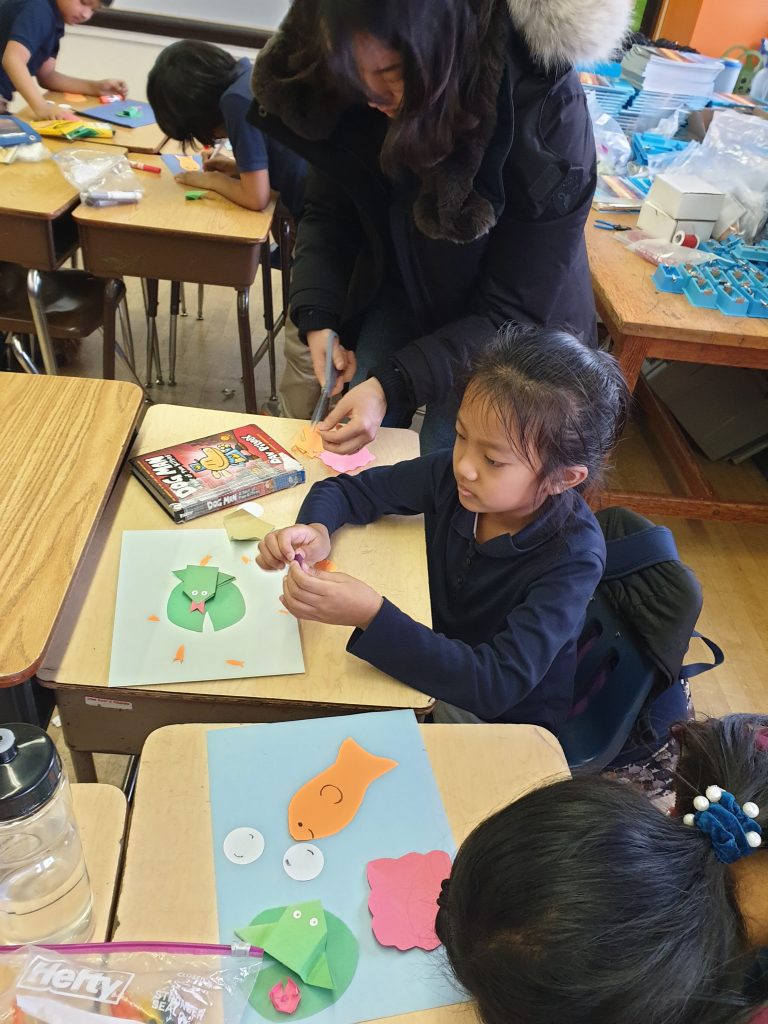
Origami is a well known Japanese practice that has been seen to enhance mindfulness. It can be done almost anywhere and reinforces the need to concentrate on one thing at a time. This has been shown to allow the mind to stabilize and calm down, an important attribute in life. It also promotes hand-eye coordination, which is also needed for writing, reading, playing an instrument or sport, and drawing. Overall, it is an incredibly beneficial activity that can even help students improve academically or physically while still being fun. We found that our students were incredibly interested in learning about frogs, and in turn, teaching us what they knew. We also noticed that students who grasped the origami frog quicker were willing to go around independently and help their classmates encouraging leadership and unity.
